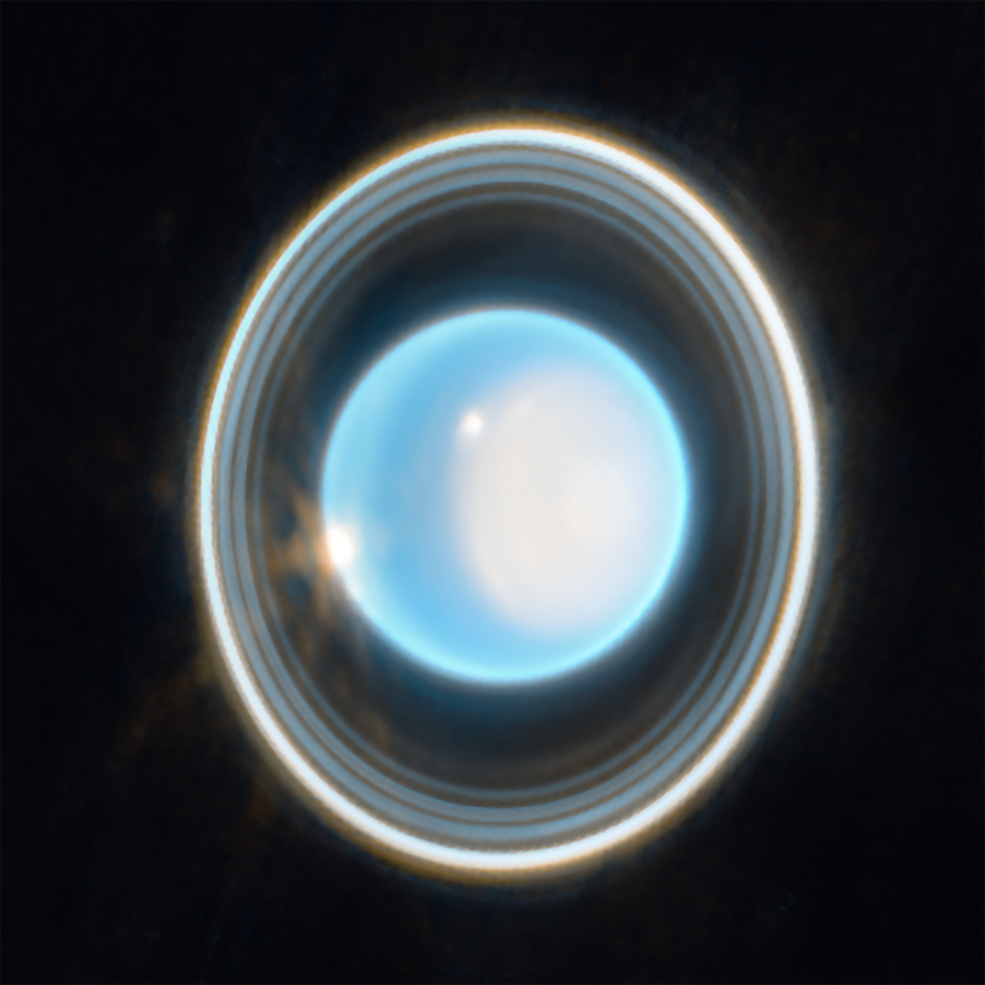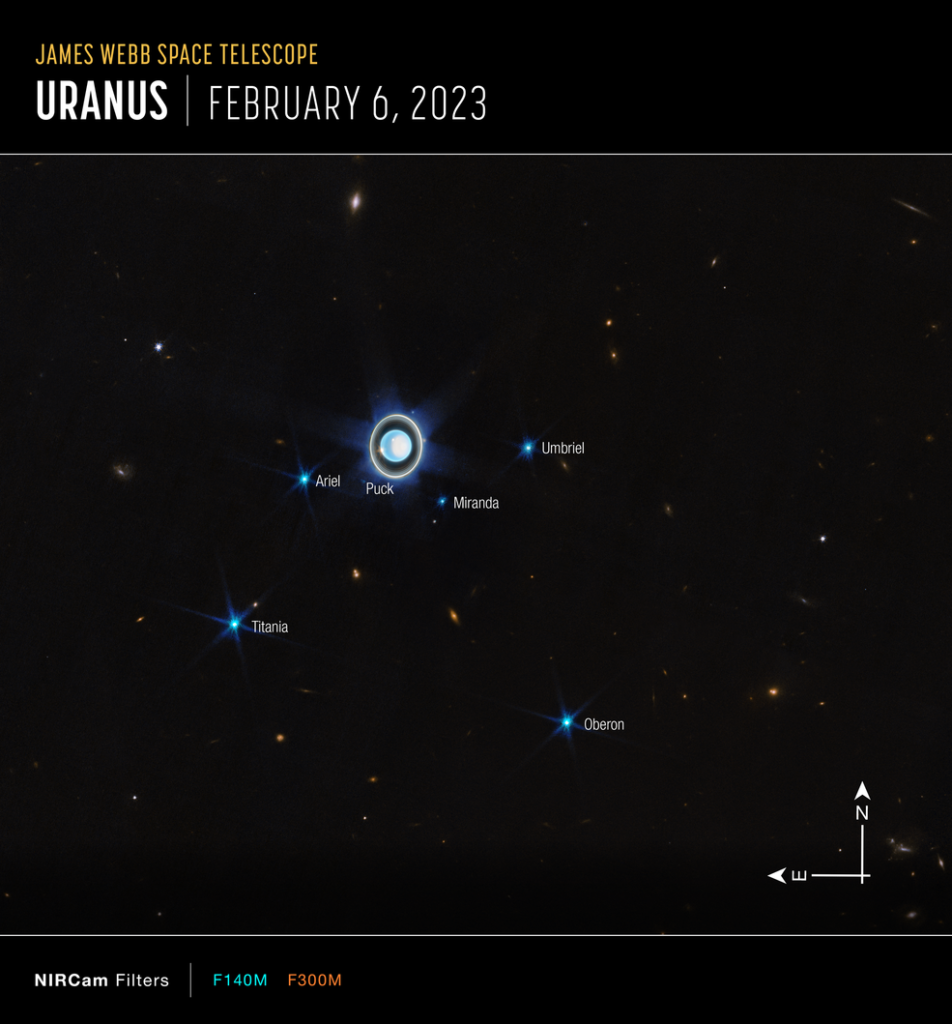The $10 billion observatory James Webb telescope has revealed the hidden rings of Uranus planet while capturing the latest images of the planet.
The James Webb Space Telescope has captured fresh images of Uranus, revealing its rings with fascinating details. Uranus has 13 known rings, 11 of which are visible in the new image.
The James Webb Telescope, the latest observatory that senses light at invisible, infrared wavelengths, has captured a stunning set of images of Uranus revealing its glorious ring system.

Uranus Takes 84 Years To Revolve Around Sun
Uranus is unique in that it is the only planet tilted at a right angle to its orbit, causing extreme seasons.
The planet takes 84 years to make a trip around the sun, spending long stretches in constant sunlight and complete darkness.
The new image of Uranus shows the planet’s north pole, where it is currently experiencing late spring.
Read Also:
NASA TEMPO Mission with SpaceX to Monitor Earth’s Pollution From Space.
ISRO Aditya-L1: India’s First Solar Mission To Explore Sun-Earth Connection.
ESA Juice Mission: Spacecraft To Explore Jupiter’s Icy Moons.
The 13 Rings of Uranus
Uranus has 13 known rings, 11 of which are visible in the new image. Some of these rings are so bright that when they are close together, they seem to merge into one another and become larger rings.
Nine of the rings are considered the main rings of the planet, and two are the fainter dusty rings discovered by Voyager 2.
The rings of Uranus are made up of ice and dust, making them difficult to notice or observe. Scientists expect that future Webb images of the planet will reveal the other outer rings.

The History of Uranus Rings Observation
The image of Uranus marks one of the first times the planet’s rings have been captured by a camera since Voyager 2’s flyby in 1986.
The Keck Observatory in Hawaii has also previously spied on the planet’s ring system using advanced adaptive optics technology. Uranus’ rings are made out of ice and dust, making them difficult to see.
James Webb Telescope
The James Webb Space Telescope is a $10 billion observatory that will help scientists better understand the cosmos.
Webb’s image of Uranus follows on the heels of its photo of Neptune last year, which also revealed ghostly rings around another ice giant within the solar system.
Webb’s ability to capture vivid imagery within our solar system demonstrates its ability to collect extraordinary data not just of the distant universe, but of celestial objects closer to home.
Scientists believe Webb will unleash a golden age in our understanding of the cosmos.
Webb also found a brightened spot at the pole in the sun, known as a polar cap, which apparently appears when the pole enters direct sunlight in the summer and vanishes in the fall.
The telescope’s new observations will help astronomy researchers understand what’s going on in the Uranus planet and how its rings work.
Saturn: The Queen of Rings
While the new image of Uranus is stunning, planetary scientist Jessie Christiansen cautioned in a tweet that Saturn is still the queen of the rings.
Christiansen shared side-by-side photos of Saturn and Uranus to compare the sizes of their ring systems.
The latest imagery set of Uranus captured by the James Webb Space Telescope is a significant achievement in astronomy and provides new insights into our solar system.
This latest observation will help researchers understand more about the planet’s polar cap and ring system.
![James Webb Telescope Captures The New Insights Of Uranus [2023] Image of Uranus, captured by the James Webb Telescope.](https://sciencefizz.com/wp-content/uploads/2023/04/Science-Fizz-1200x675-4-1024x576.png)